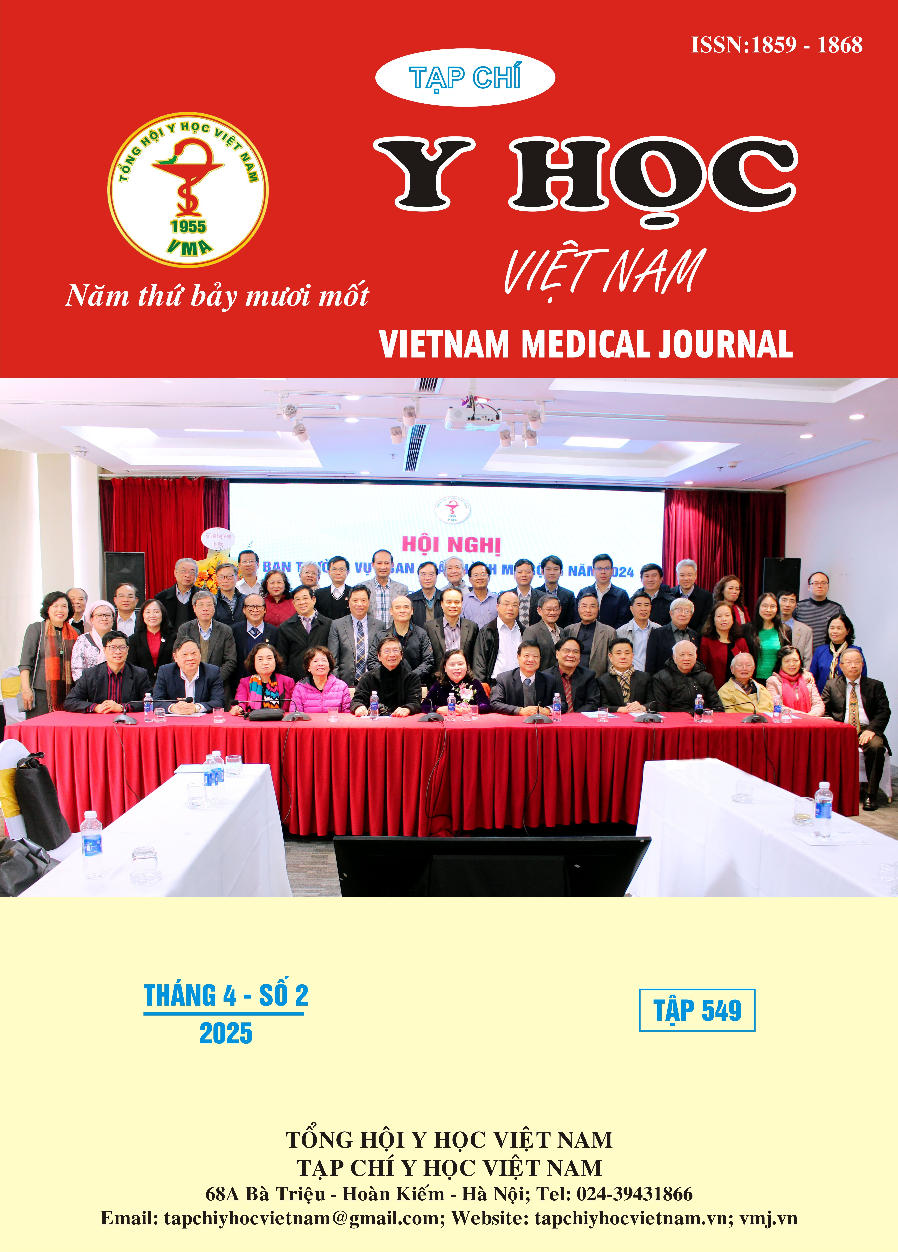SOME PARACLINICAL CHARACTERISTICS IN CHILDREN WITH PRURIGO NODULARIS
Main Article Content
Abstract
Prurigo nodularis is a common dermatological condition in children, characterized by the presence of small nodules on the skin, accompanied by itching, scratches, and post-inflammatory hyperpigmentation. This cross-sectional descriptive study was conducted to describe certain paraclinical characteristics and serum IgE levels in pediatric patients with prurigo nodularis and to determine the relationship between serum IgE levels and clinical and paraclinical features. It was conducted on 94 children diagnosed with prurigo nodularis from August 2023 to August 2024. Total serum IgE in blood was measured using the electrochemiluminescence immunoassay (ECLIA) method on the Roche-Cobas E411 system. Results showed that 62.8% of the patients were male and 37.2% were female, with a mean age of 7.15 ± 4.21 years (ranging from 1 to 16 years). Most paraclinical indices were within normal limits. Leukocytosis was observed in 26.6% of patients, with a mean value of 8.1 ± 1.9 G/L. Normal eosinophil levels were present in 78.7% of cases, while 21.3% showed eosinophilia. Hemoglobin levels were normal in 76.6% of patients and elevated in 6.4%, with a mean value of 13.1 ± 1.9 g/dL. Normal levels of AST and ALT were observed in 85.1% and 86.2% of patients, respectively, with mean AST and ALT values of 32.9 ± 14.6 IU/L and 19.4 ± 12.3 IU/L. Elevated serum IgE levels were found in 84.0% of patients, with a mean value of 1067.726 ± 1466.142 IU/mL. There was no correlation between serum IgE levels and pruritus severity, lesion extent, and disease activity.
Article Details
Keywords
children, eosinophils, liver enzymes, prurigo nodularis, serum IgE levels
References
2. Belzberg M, Alphonse MP, Brown I, et al. Prurigo Nodularis Is Characterized by Systemic and Cutaneous T Helper 22 Immune Polarization. J Invest Dermatol. 2021;141(9):2208-2218.e14. doi:10.1016/j.jid.2021.02.749
3. Cornman HL, Deng J, Kambala A, Parthasarathy V, Reddy SV, Kwatra SG. Clinical utility of peripheral blood laboratory testing in the diagnostic workup of prurigo nodularis: A multicenter cohort study. JAAD Int. 2023;13:74-82. doi:10.1016/j.jdin.2023.07.015
4. Matsuo S, Yamazaki Y, Yoshii Y, Satoh T. Prurigo in a patient with psoriasis. J Dtsch Dermatol Ges J Ger Soc Dermatol JDDG. 2020;18(6):631-633. doi:10.1111/ddg.14109
5. Sm M, Khand A. Quantitative and qualitative changes in leukocytes of psoriatic patients. Pakistan Journal of Physiology 01/01 2011;7(1):40-3.
6. Morss-Walton PC, Greif C, Holcomb ZE, et al. Treatment of hidradenitis suppurativa resolves associated hematologic abnormalities. Int J Womens Dermatol. 2022;8(1):e011. doi:10.1097/JW9.0000000000000011
7. Parthasarathy V, Lee K, Deng J. Sleep disturbance in adults with prurigo nodularis is associated with increased circulating C-reactive protein levels and adverse cardiovascular outcomes. J Am Acad Dermatol. 2022;87(3):AB111.
8. Cuevas-Gonzalez JC, Lievanos-Estrada Z, Vega-Memije ME, Hojyo-Tomoka MT, Dominguez-Soto L. Correlation of serum IgE levels and clinical manifestations in patients with actinic prurigo. An Bras Dermatol. 2016;91(1):23-26. doi:10.1590/abd1806-4841.20163941
9. Sonkoly E. Reversal of the disease signature in prurigo nodularis by blocking the itch cytokine. J Allergy Clin Immunol. 2022;149(4):1213-1215. doi:10.1016/j.jaci.2022.02.009
10. Yosipovitch G, Reaney M, Mastey V, et al. Peak Pruritus Numerical Rating Scale: psychometric validation and responder definition for assessing itch in moderate-to-severe atopic dermatitis. Br J Dermatol. 2019;181(4):761-769. doi:10.1111/bjd.17744


